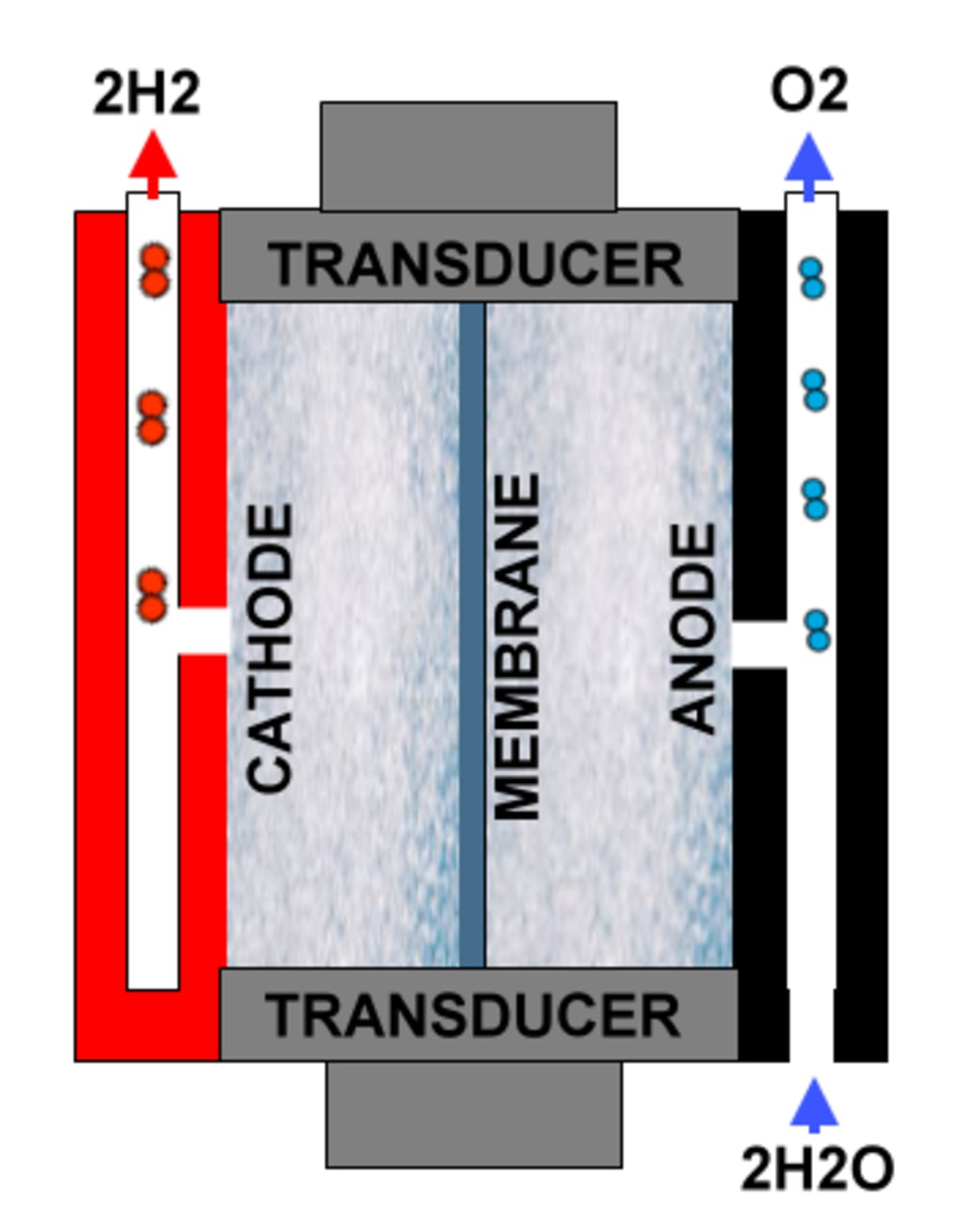Introduction to Acoustic Catalyzed Green Hydrogen Production
Hydrogen is the most abundant element in the universe. Where there is water there is Hydrogen. Hydrogen is the fuel used by the Sun to product Solar energy by the process of Fusion. Reproducing this type of Fusion on the Earth is not so easy.
My hope is that sono-chemistry may one day soon reveal a new phenomenon that is not nuclear yet will allow for the production of safe, clean, low cost energy for the human race.
Hydrogen could one day soon become the primary source of energy for transportation and industry. Hydrocarbon fuels like diesel and gasoline are made of Hydrogen and Carbon. Hydrocarbon fuels only use the Hydrogen to produce energy while the Carbon produces waste byproducts like Carbon dioxide and Carbon particles in the air. Hydrogen is a Hydrocarbon without the Carbon. Hydrogen is a nearly perfect fuel.
There are different production methods for Hydrogen. Green Hydrogen is produced without harmful pollutants or unwanted byproducts. The only byproduct of Hydrogen combustion is pure clean water. Green Hydrogen is Hydrogen most often produced by splitting normal water (2H20) into Hydrogen and oxygen using electrolysis.
Current electrolysis systems require a large amount of electrical energy. This technology is the result of decades of research and development focused on using sound (acoustic) energy to greatly improve the efficiency of GREEN HYDROGEN production and thereby reducing the cost of producing safe, carbon free Green Hydrogen from water.
The U.S. Department of Energy (DOE) seeks to reduce the cost of clean hydrogen by 80% to $1 per 1 kilogram by 2035. I believe it is possible to achieve this goal by forth quarter 2023 using acoustic catalyzed production of Hydrogen.
This research began in 1995 when science fiction writer and visionary Arthur Clarke asked me if he could assist him by arranging to test an energy device that was located in Russia. Arthur suspected that the device had certain properties that allowed it to produce more energy out than was put into the device. Robert arrange for the testing which seemed to confirm that there was slightly more energy being produced by the device than was used to power the device. Many different scientists put forth theories to explain the phenomenon that could be producing the over unity condition. I noticed that the device produced a high-frequency sound of very high amplitude. This sound was producing acoustic cavitation. So began my work in the newly emergent field of sono-chemistry.
Like this entry?
-
About the Entrant
- Name:Robert X Bishop
- Type of entry:individual
- Software used for this entry:COMSOL
- Patent status:none

